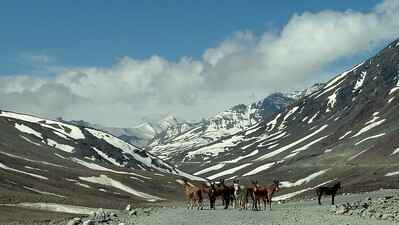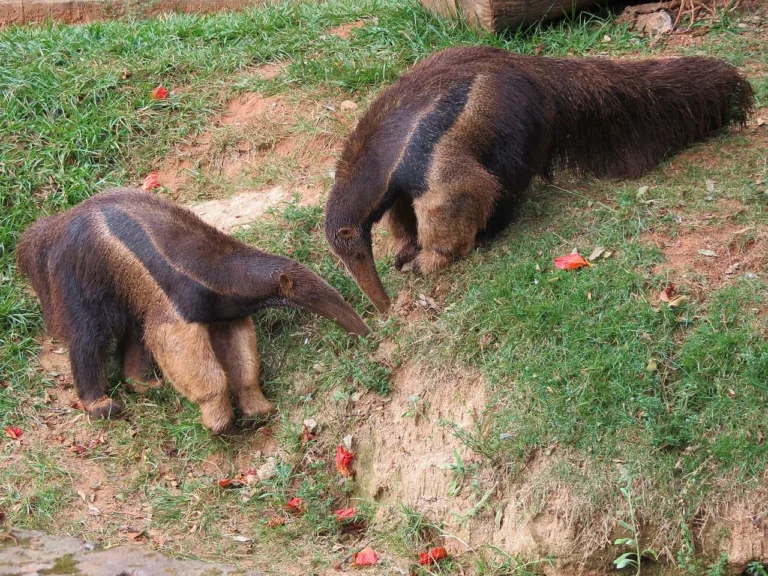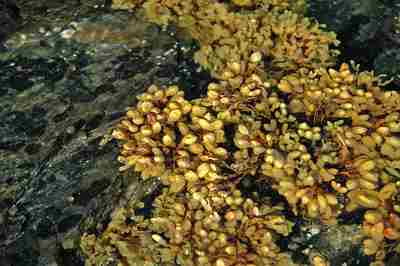Desert Climate Types and Characteristics Discussed
Desert climate characteristics are; low precipitation (<10 inches annually), high daytime temperature (up to 38°C average), low nighttime temperature, and low atmospheric humidity.
The types of desert climate are; Mild Desert Climate (BWn/BWh), Cold Desert Climate (BWk), and Hot Desert Climate (BWh), according to the Köppen system of classification. Each of these desert climate-types is unique in its conditions, which are in turn determined by climatic elements like temperature, humidity, precipitation, wind intensity, and solar radiation.
This article discusses desert climate types, conditions and elements, as follows;
1). Mild Desert Climate (BWn/BWh) (as one of the Types of Desert Climate)
The climate of a desert is generally characterized by low precipitation at less than 25 cm annually, significant heat levels, and temperature fluctuations of over 40°C daily [3].
Mild desert climate (BWn/BWh) is a transient type of desert climate, between two extremes of hot and cold arid conditions.
In some studies, mild desert climate is alternatively called semi-arid climate; although this is in fact a distinct type of desert climate of secondary importance, denoted by BSh (Hot semi-arid climate); BSk (Cold semi-arid climate), and BSn (Mild semi-arid climate), according to the Köppen classification system.
Some types of deserts, like the coastal desert, are known for having mild desert climate, whose origin can be attributed to the atmospheric-forcing dynamics of inland and local air currents respectively. These dynamics cause inland winds to lose their moisture before reaching the coastal desert..
However, because of their relative proximity to the coast, areas with mild desert climate experience less-harsh conditions than hot-and-dry deserts.
Locations with mild desert climate generally occur along the western coastal margin of continents in tropical and neo-tropical geographic zones; such as the Atacama Desert in Chile.

2). Cold Desert Climate (BWk)
A cold desert is a high-latitude region with temperate climatic characteristics, significantly-cold winters, and less than 20 cm of annual precipitation.
Because of their geographic situation in high-latitude zones, cold deserts have lower average temperature than other types of deserts situated in equatorial zones.
Characteristics of the cold desert climate include; low humidity and precipitation, and less than 30°C average annual temperature.
Cold desert climate comprises of prolonged winters and warm to hot summers, with average temperatures of 1°C and 23.5 °C respectively (winter temperature may fall significantly below 0°C).
Examples of cold deserts with BWk Köppen climate are; Gobi and Antarctic deserts in eastern Asia and Antarctica respectively.
The cold desert climate is notable for its versatility, and its role in carbon sequestration due to slow rates of biodegradation under low-temperature conditions. The amount of stored organic carbon in cold desert soils have been found to decrease with depth [1], indicating that this carbon is not stored primarily by plant photosynthesis, as is the case with forest soils.
Also, some parts of other temperate ecosystems like prairies and tundras may also experience cold desert climate over the course of the year, as a result of wind and solar interactions that result in cold, arid conditions, in these ecosystems.

3). Hot Desert Climate (BWh) (as one of the Types of Desert Climate)
The hot desert climate (BWh) is the harshest of all types of desert climates; with summer temperatures easily reaching 40°C and winter temperatures ranging from 20-30°C.
Regions that experience hot desert climate are called 'hot and dry deserts', and occur in subtropical zones, between latitudes 20° and 30° north and south of the equator.
Hot desert climate originates from high intensity solar heating, which reduces air humidity and density, to produce active, dry winds and arid soils typical of drought conditions.
While they are very similar, hot desert climate (BWh) differs from hot semiarid climate (BSh)
The difference between BWh and BSh climates is that BWh climate is much harsher, restricted mostly to equatorial zones, and produces hot and dry desert conditions; while BSh is less harsh, restricted mostly to temperate zones, and produces hot and semiarid conditions like those of temperate grasslands.
While the semiarid (BSh) climate is unable to support the growth of large plants like trees, it permits the survival of more plant and animal species, leading to higher species richness and biodiversity in semiarid regions.
Hot desert climate characteristics, on the other hand, are significantly harsher, so that desert animals in areas that experience such conditions, are only those which are highly-adapted to the harsh terrain.
Hot desert vegetation consists of plants with adaptive features like; well-developed root system and relatively-low evapotranspiration rate, that enable them survive under the prevalent conditions [2] [4].
An example of a hot and dry desert is the Sahara Desert in Africa.

Conclusion
Climate in the desert is defined by low precipitation (less than 10 inches or 25 cm per annum), high temperature, significant daily temperature fluctuation, low soil and atmospheric humidity, and high drought susceptibility.
The types of desert climate are;
1. Mild Desert Climate (BWn/BWh)
2. Cold Desert Climate (BWk)
3. Hot Desert Climate (BWh)
Other climatic conditions similar to the desert climate are;
1. Hot Semi-Arid Climate (BSh)
2. Cold Semi-Arid Climate (BSk)
3. Mild Semi-Arid Climate (BSn)
References
1). Acharya, S.; Charan, G.; Singh, N.; Srivastava, R. B. (2012). "Soil organic carbon sequestration of cold desert Ladakh." Range Management and Agroforestry 33(1):79-82. Available at: https://www.indianjournals.com/ijor.aspx?target=ijor:rma&volume=33&issue=1&article=016. (Accessed 10 April 2023).
2). Kirschner, G. K.; Xiao, T. T.; Blilou, I. (2021). "Rooting in the Desert: A Developmental Overview on Desert Plants." Genes (Basel). 2021 May 10;12(5):709. Available at: https://doi.org/10.3390/genes12050709. (Accessed 10 April 2023).
3). Nicholson, S. E. (2005). "Deserts. In: Oliver, J.E. (eds) Encyclopedia of World Climatology. Encyclopedia of Earth Sciences Series." Springer, Dordrecht. Available at: https://doi.org/10.1007/1-4020-3266-8_66. (Accessed 10 April 2023).
4). Sandquist, D.R. (2015). "Plants in Deserts." In: Monson, R. (eds) Ecology and the Environment., vol 8. Springer, New York, NY. https://doi.org/10.1007/978-1-4614-7612-2_3-2. (Accessed 10 April 2023).




